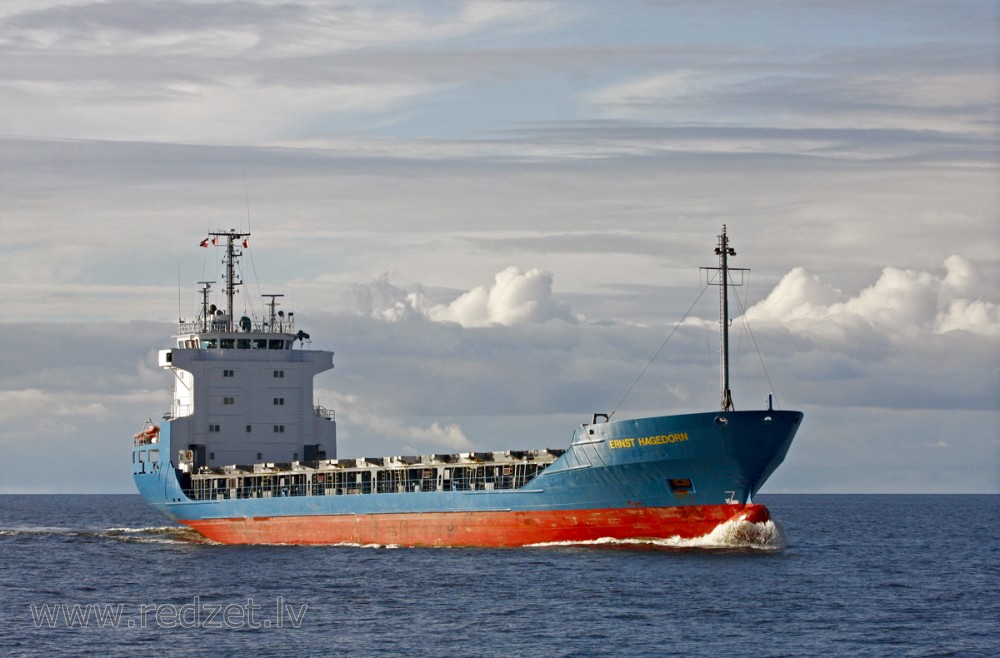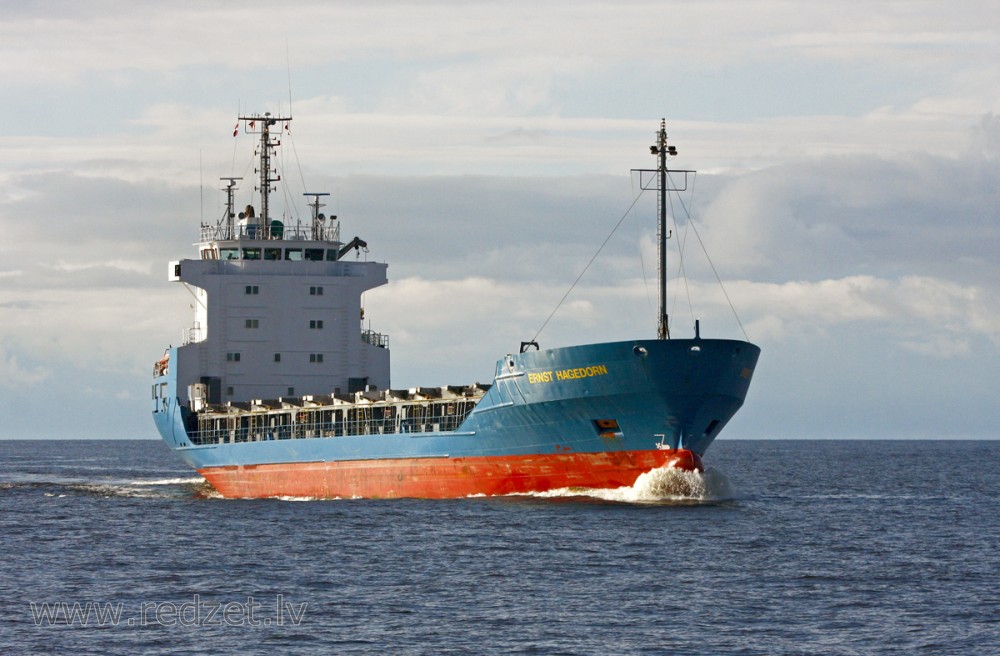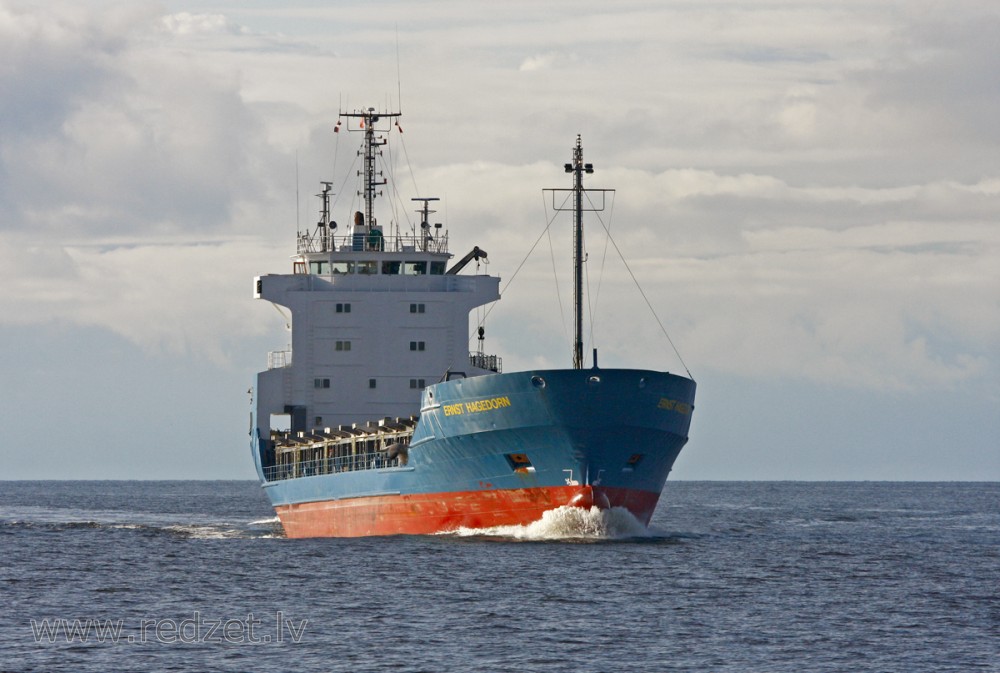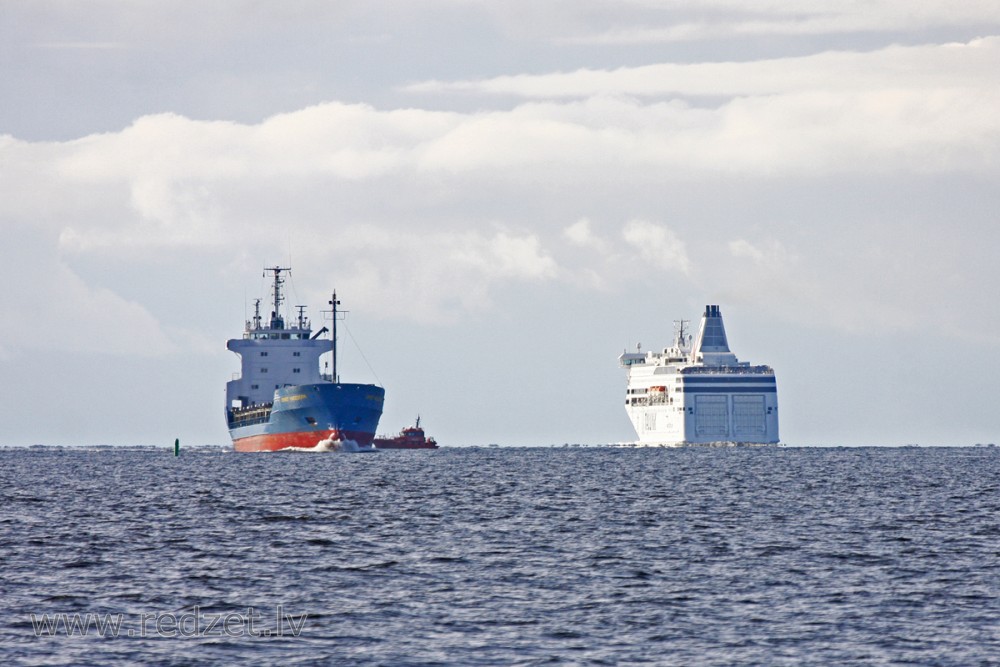Cargo ship
A cargo ship or freighter ship is any sort of ship or vessel that carries cargo, goods, and materials from one port to another. Thousands of cargo carriers ply the world's seas and oceans each year, handling the bulk of international trade. Cargo ships are usually specially designed for the task, often being equipped with cranes and other mechanisms to load and unload, and come in all sizes. Today, they are almost always built by welded steel, and with some exceptions generally have a life expectancy of 25 to 30 years before being scrapped.
Types
Cargo ships/freighters can be divided into six groups, according to the type of cargo they carry. These groups are:
General cargo vessels
Container ships
Tankers
Dry bulk carriers
Multi-purpose vessels
Reefer ships
General cargo vessels carry packaged items like chemicals, foods, furniture, machinery, motor- and military vehicles, footwear, garments, etc.
Tankers carry petroleum products or other liquid cargo.
Dry bulk carriers carry coal, grain, ore and other similar products in loose form.
Multi-purpose vessels, as the name suggests, carry different classes of cargo – e.g. liquid and general cargo – at the same time.
A Reefer (or Refrigerated) ship is specifically designed and used for shipping perishable commodities which require temperature-controlled, mostly fruits, meat, fish, vegetables, dairy products and other foodstuffs.
Specialized types of cargo vessels include container ships and bulk carriers (technically tankers of all sizes are cargo ships, although they are routinely thought of as a separate category). Cargo ships fall into two further categories that reflect the services they offer to industry: liner and tramp services. Those on a fixed published schedule and fixed tariff rates are cargo liners. Tramp ships do not have fixed schedules. Users charter them to haul loads. Generally, the smaller shipping companies and private individuals operate tramp ships. Cargo liners run on fixed schedules published by the shipping companies. Each trip a liner takes is called a voyage. Liners mostly carry general cargo. However, some cargo liners may carry passengers also. A cargo liner that carries 12 or more passengers is called a combination or passenger-
run-cargo line.
History
The earliest records of waterborne activity mention the carriage of items for trade; the evidence of history and archaeology shows the practice to be widespread by the beginning of the 1st millennium BC, and as early as the 14th and 15th centuries BC small Mediterranean cargo ships like those of the 50 foot long (15–16 metre) Uluburun ship were carrying 20 tons of exotic cargo; 11 tons of raw copper, jars, glass, ivory, gold, spices, and treasures from Canaan, Greece, Egypt, and Africa. The desire to operate trade routes over longer distances, and throughout more seasons of the year, motivated improvements in ship design during the Middle Ages.
Before the middle of the 19th century, the incidence of piracy resulted in most cargo ships being armed, sometimes quite heavily, as in the case of the Manila galleons and East Indiamen. They were also sometimes escorted by warships.
en.wikipedia.org





